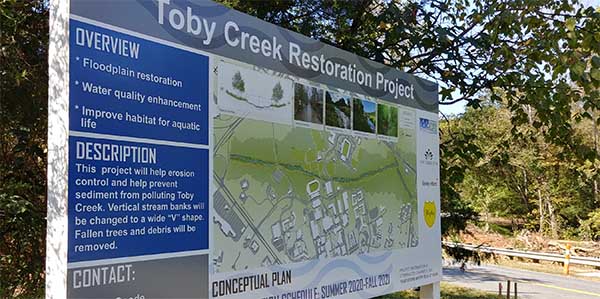Creek restoration and reclaimed water projects underway

Toby Creek meanders through campus, and its on-campus appearance looks different with the removal of trees along the stream corridor as part of a stream restoration project being led by Mecklenburg County Storm Water Services.
Stream restoration projects, such as this, will look different over the course of the project. In the beginning, vegetation must be removed so the banks can be reshaped. Then at the end of construction, the banks will be stabilized with grasses, shrubs and small trees. Several years after the end of construction the trees will have grown, and it will be hard to recognize the construction. The shores will be cleared and the stream banks reshaped with the goal of stabilizing the banks and reducing erosion. After construction has been completed, native plants and trees will be planted along the banks. In the end, the vegetation will mature and the stream corridor will be more stable.
So, what’s the big deal, and why should you care? These types of projects contribute greatly to improving the water quality of streams, lakes, ponds and wetlands, while increasing natural habitats throughout Mecklenburg County. And, because safe and healthy stream systems are not only of importance today, but they will prove beneficial for future generations.
Another initiative simultaneously in progress is the UNC Charlotte Reclaimed Water System project. Last month, Charlotte Water began construction on a trunkline that will deliver reclaimed water from the Mallard Creek Wastewater Reclamation Facility to campus. The Engineering and Planning, Design and Construction (PDC) units within the University’s Facilities Management Department are working in collaboration with Charlotte Water to design and build a distribution system for the campus. An on-campus reclaimed water system will reduce the University’s use of potable water, more commonly referred to as drinking water. The reclaimed water system will be used for cooling water in campus utility plants and irrigation, which do not require water treated to the levels of potable water. Campus-wide usage of potable water for all systems that supply human consumption (drinking, eating, bathing, and washing) will continue.
More information will be provided during key milestones for each project. In the meantime, contact Greg Cole or Brian Kugler with questions.